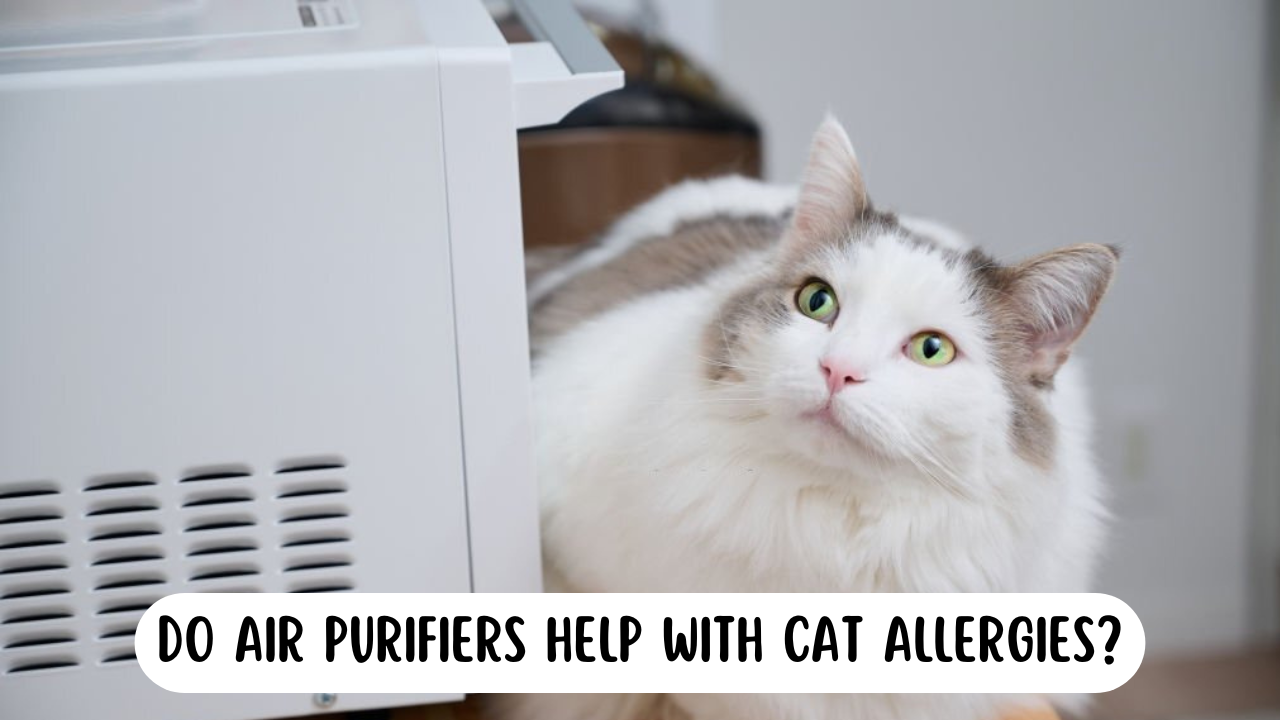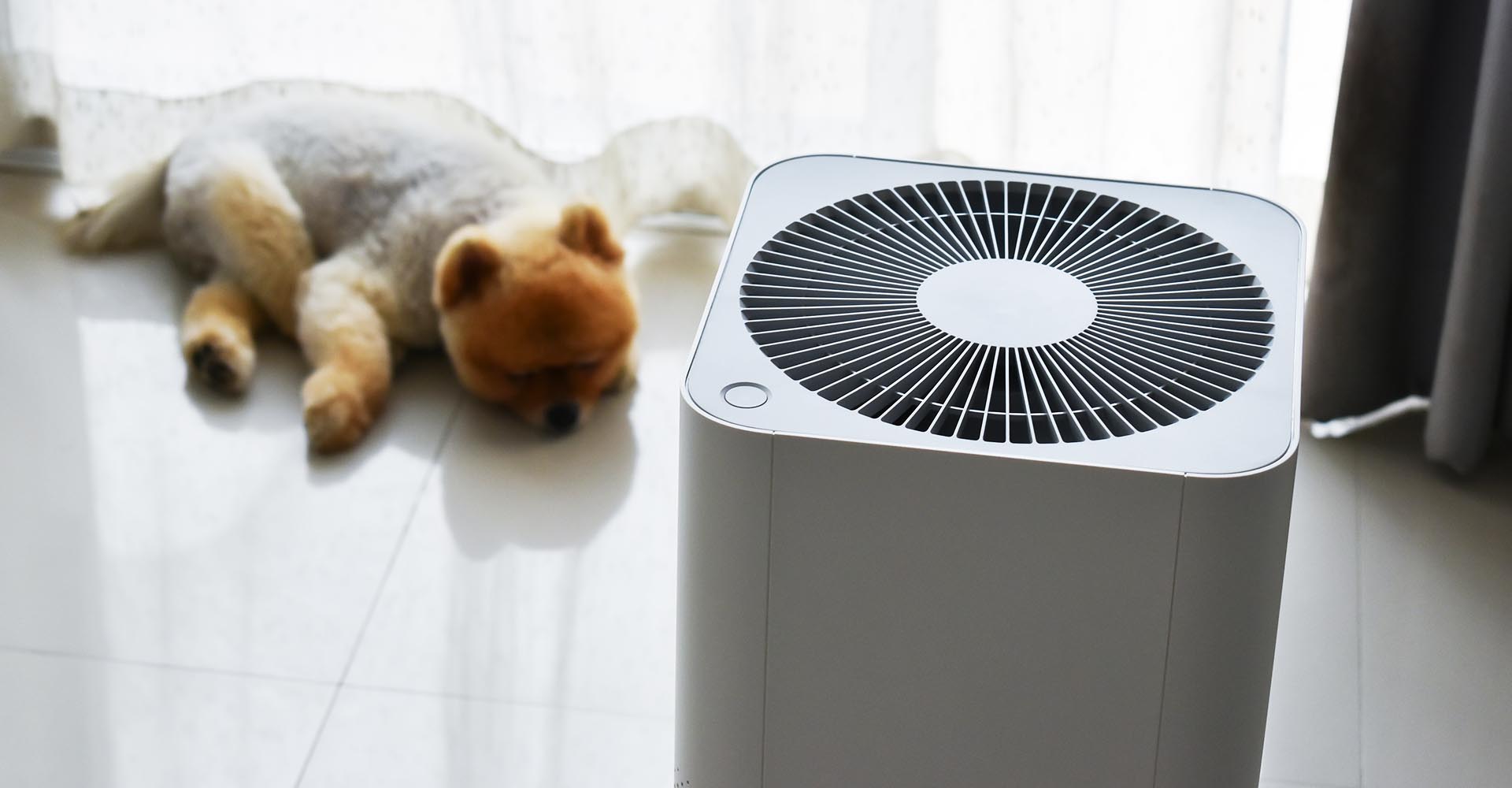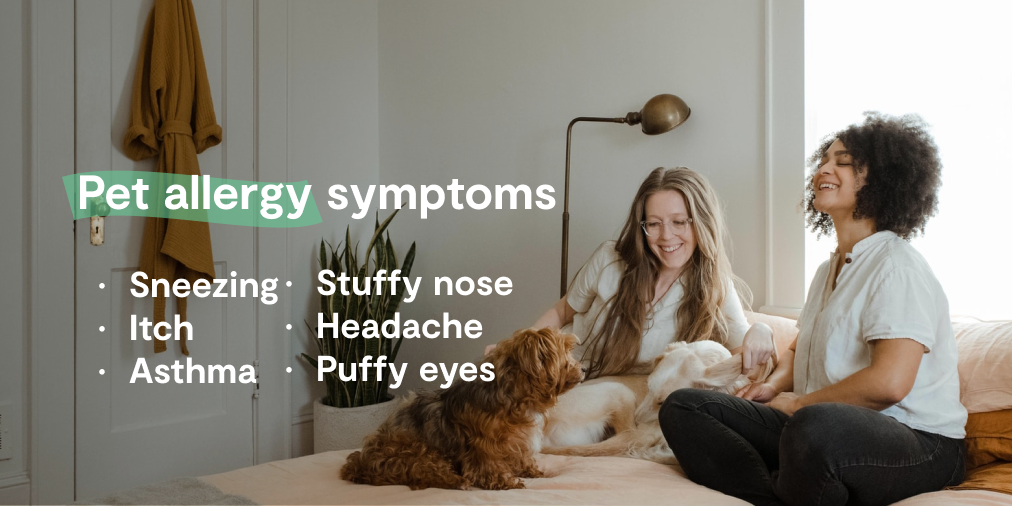Do Air Purifiers Help With Pet Allergies

Do Air Purifiers Really Help With Pet Allergies? Your Questions Answered
Pet allergies can be a real challenge, especially for those who love animals. Many people wonder if air purifiers can offer relief. Here's a breakdown of common questions about using air purifiers for pet allergies:
1. What specifically in pet dander causes allergies, and how do air purifiers target it?
The primary culprit in pet allergies is not actually the fur itself, but rather the proteins found in:
- Dander: Tiny, microscopic flakes of skin that pets shed.
- Saliva: Present when pets groom themselves and then shed the dried saliva.
- Urine: Can become airborne when dry.
These allergens become airborne and easily circulate throughout your home. Air purifiers work by drawing air in, filtering out these particles, and then releasing cleaner air back into the room. The effectiveness depends largely on the type of filter used, with HEPA filters being the most recommended.
2. Are all air purifiers effective for pet allergies, or are there specific features I should look for?
Not all air purifiers are created equal when it comes to tackling pet allergens. To effectively reduce pet allergy symptoms, look for the following features:
- HEPA Filter: This is crucial. HEPA (High-Efficiency Particulate Air) filters are designed to capture 99.97% of particles as small as 0.3 microns. This includes pet dander, dust mites, pollen, and other common allergens.
- Activated Carbon Filter: While HEPA filters focus on particulate matter, an activated carbon filter helps to remove odors, gases, and volatile organic compounds (VOCs). This is beneficial because pets can bring in outdoor smells and have their own unique odors. A combination filter that includes both HEPA and activated carbon is ideal.
- CADR Rating: CADR stands for Clean Air Delivery Rate. This rating indicates how quickly the air purifier can clean a room of a specific size. Look for a CADR rating that is appropriate for the size of the room where you'll be using the purifier. A higher CADR rating means the purifier can clean a larger room more quickly.
- Filter Replacement Schedule: Consider the cost and frequency of filter replacements. Some air purifiers have filters that need to be replaced more often than others. Check the manufacturer's recommendations and factor this into your long-term cost analysis.
- Quiet Operation: An air purifier that is too noisy can be disruptive, especially in bedrooms or living areas. Look for models that are designed to operate quietly, particularly at lower speeds.
- Sealed System: Make sure the air purifier has a well-sealed system. If the unit is not properly sealed, some air may bypass the filter, reducing its effectiveness.
Avoid air purifiers that generate ozone. While ozone can be effective at removing odors, it is also a lung irritant and can be harmful to your health, as well as your pet’s.
3. Where should I place the air purifier for maximum effect if I have a dog and two cats?
Placement is key to maximizing the effectiveness of your air purifier. Consider these factors:
- High-Traffic Areas: Place the air purifier in the rooms where your pets spend the most time. This is usually the living room, bedrooms, or play areas.
- Near Pet Beds or Litter Boxes: These areas are likely to have a higher concentration of dander and other allergens, so placing an air purifier nearby can help to capture them quickly.
- Central Location: In larger open-plan spaces, try to position the air purifier in a central location to ensure it circulates air throughout the entire area.
- Away from Obstructions: Avoid placing the air purifier behind furniture or in corners where airflow is restricted. Make sure the air intake and exhaust vents are not blocked.
- Elevated Position (if appropriate): Some air purifiers are designed to be placed on a table or shelf. This can help to improve air circulation and prevent the unit from sucking in dust and debris from the floor.
- Consider Multiple Units: For larger homes or homes with multiple pets, consider using multiple air purifiers to ensure adequate coverage throughout the house. One in the bedroom, one in the living room is a great starting point.
Remember that air purifiers work best when they are running continuously. Running the purifier only occasionally will not be as effective at reducing allergen levels.
4. Besides air purifiers, what other steps can I take to minimize pet allergies in my home?
While air purifiers are a valuable tool, they are most effective when combined with other allergy-reducing strategies. Here's a comprehensive approach:
- Regular Cleaning: Vacuum frequently (at least 2-3 times per week) with a vacuum cleaner that has a HEPA filter. This will help to remove pet dander, dust mites, and other allergens from carpets, rugs, and upholstery.
- Hard Surface Cleaning: Regularly dust and mop hard surfaces to remove pet dander and other allergens that accumulate.
- Wash Pet Bedding: Wash your pet's bedding at least once a week in hot water to kill dust mites and remove allergens.
- Air Duct Cleaning: Consider having your air ducts professionally cleaned to remove accumulated dust, dander, and other allergens.
- Pet Grooming: Bathe your pet regularly (once a week or as recommended by your veterinarian) to remove loose fur and dander. Brush your pet frequently to remove shedding hair. Do this outdoors if possible.
- Limit Pet Access: If possible, restrict your pet's access to certain areas of the house, such as bedrooms. This can help to reduce allergen levels in those areas.
- Wash Hands Frequently: Wash your hands thoroughly after petting or playing with your pet.
- Consider Allergy Shots (Immunotherapy): If your allergies are severe, talk to your doctor about allergy shots. Immunotherapy can help to desensitize you to pet allergens over time.
- Use Allergen-Reducing Laundry Detergent: Use laundry detergents specifically designed to remove allergens from clothing and bedding.
- Control Humidity: High humidity can promote the growth of mold and dust mites, which can exacerbate allergies. Use a dehumidifier to keep indoor humidity levels below 50%.
- Replace Carpeting with Hard Flooring: Carpeting can trap pet dander and other allergens, making it difficult to remove them completely. Consider replacing carpeting with hard flooring, such as hardwood, tile, or laminate.
- Use Allergen-Proof Bedding Encasements: Encase your mattress and pillows in allergen-proof covers to prevent dust mites from colonizing them.
By combining these strategies with the use of an air purifier, you can significantly reduce pet allergen levels in your home and improve your allergy symptoms.
5. How do I know if the air purifier is actually working to reduce my pet allergies?
It can be challenging to definitively prove that an air purifier is working, but here are several ways to assess its effectiveness:
- Symptom Relief: This is the most obvious indicator. Pay attention to your allergy symptoms, such as sneezing, runny nose, itchy eyes, and skin rashes. If your symptoms are noticeably reduced after using the air purifier for a few weeks, it's a good sign that it's working.
- Reduced Odors: If your air purifier has an activated carbon filter, you should notice a reduction in pet odors. A fresher-smelling home is a good indication that the filter is removing odor-causing particles.
- Visual Inspection of Filters: Regularly inspect the air purifier's filters. If the filters are visibly dirty, it means they are capturing particles from the air. Follow the manufacturer's recommendations for filter replacement.
- Allergy Testing: If you want a more objective measure, you can have your doctor perform allergy testing to determine your sensitivity levels to pet allergens. Repeat the testing after using the air purifier for several months to see if there has been a change in your sensitivity.
- Air Quality Monitor: Invest in a home air quality monitor that measures particulate matter (PM2.5 and PM10) levels. This will give you a real-time reading of the air quality in your home and allow you to track changes over time. You should see a decrease in particulate matter levels after turning on the air purifier.
- "The Dust Test": Before using the air purifier, notice how quickly dust settles on surfaces. After using the air purifier consistently for a week or two, compare. If the air purifier is working effectively, you should notice less dust settling.
- Monitor Sleep Quality: If your pet allergies are affecting your sleep, track your sleep quality after using the air purifier. You may find you're sleeping better because you're not as congested or experiencing other allergy symptoms.
It's important to remember that air purifiers are just one piece of the puzzle. To get the best results, combine the use of an air purifier with other allergy-reducing strategies, such as regular cleaning and pet grooming.
6. How often should I replace the filters in my pet allergy air purifier?
The frequency of filter replacement depends on several factors, including the type of filter, the air quality in your home, and the amount of pet dander and other allergens present. Here are some general guidelines:
- HEPA Filters: HEPA filters typically need to be replaced every 6-12 months. However, if you have multiple pets or live in an area with high levels of air pollution, you may need to replace the filter more frequently.
- Activated Carbon Filters: Activated carbon filters typically need to be replaced every 3-6 months. They lose their effectiveness over time as they become saturated with odors and gases.
- Pre-Filters: Pre-filters are designed to capture larger particles, such as dust and pet hair. They should be cleaned or replaced every 1-3 months to prolong the life of the HEPA and activated carbon filters. Some are washable, others are disposable.
Always refer to the manufacturer's instructions for specific filter replacement recommendations. Many air purifiers have indicator lights that will alert you when it's time to replace the filters. It's important to replace the filters on schedule to maintain the air purifier's effectiveness.
Tip: Consider subscribing to a filter replacement service so you don't forget to change them regularly.
7. Are there any potential drawbacks to using air purifiers for pet allergies?
While air purifiers offer numerous benefits, there are a few potential drawbacks to consider:
- Cost: Air purifiers can be an initial investment, and the ongoing cost of filter replacements can add up over time. Consider your budget when choosing an air purifier and factor in the long-term costs of filter replacements.
- Noise: Some air purifiers can be noisy, especially at higher speeds. This can be disruptive, particularly in bedrooms or living areas. Look for models that are designed to operate quietly, especially if you are sensitive to noise.
- Maintenance: Air purifiers require regular maintenance, including filter replacements and cleaning. Failing to maintain the air purifier properly can reduce its effectiveness and shorten its lifespan.
- Space: Air purifiers can take up floor or table space. Consider the size of the unit and make sure you have adequate space to accommodate it.
- False Sense of Security: It's important to remember that air purifiers are not a cure-all for pet allergies. They are most effective when used in conjunction with other allergy-reducing strategies, such as regular cleaning and pet grooming. Relying solely on an air purifier may not provide sufficient relief.
Despite these potential drawbacks, the benefits of using an air purifier for pet allergies generally outweigh the negatives, especially when you choose the right model and use it as part of a comprehensive allergy management plan.










